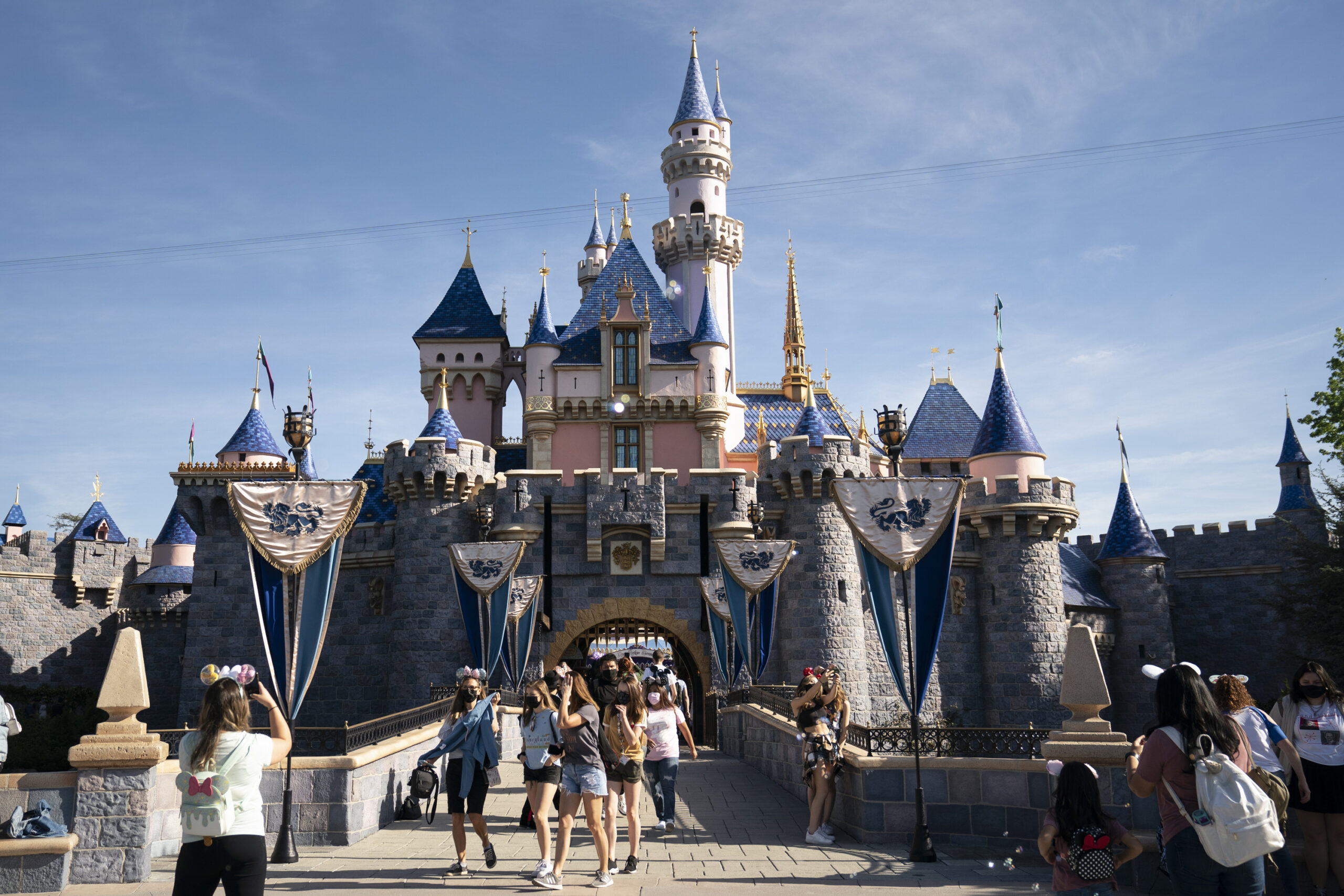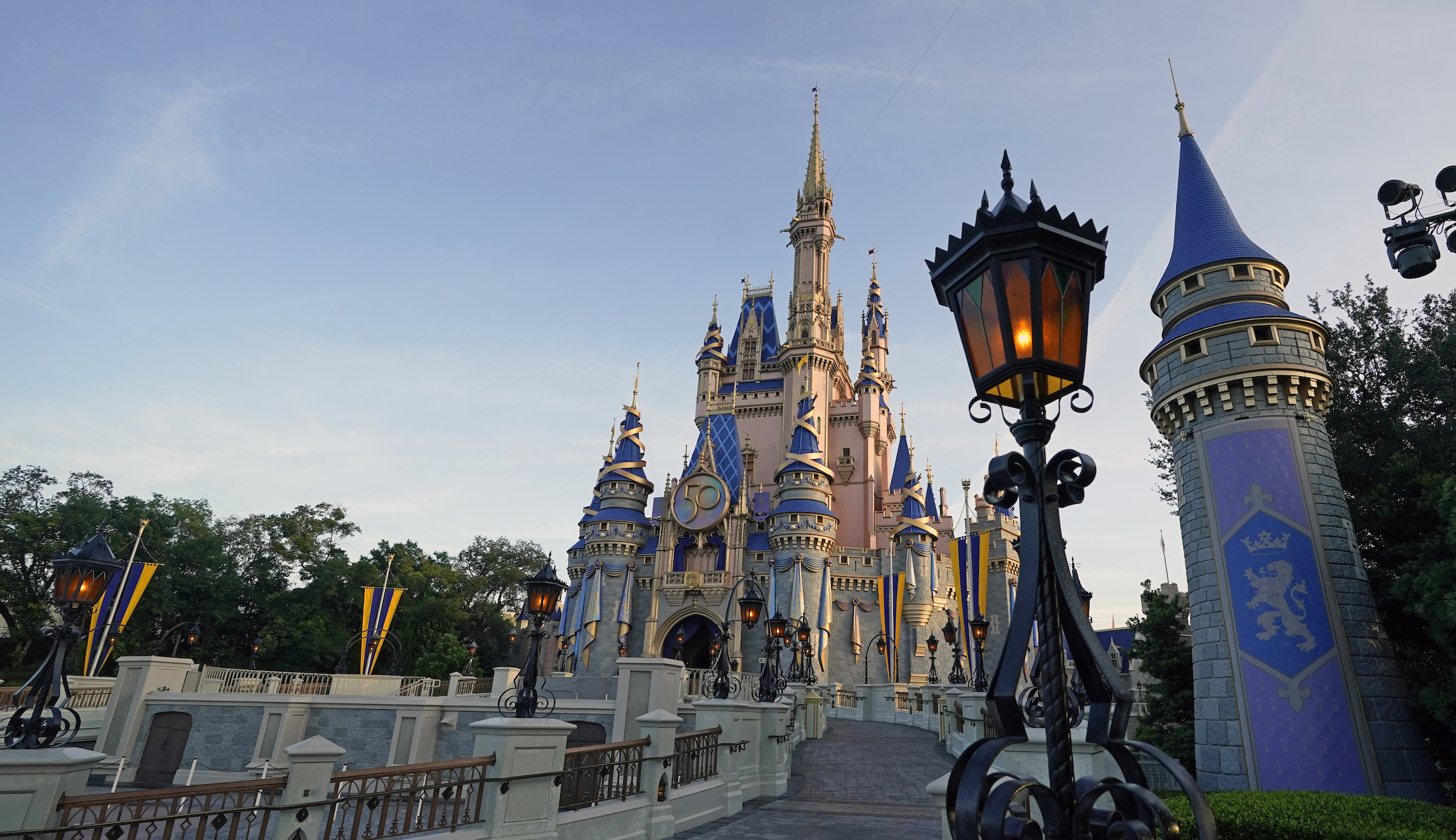Disney‘s icy relationship with the Florida government has been dominating headlines, but in recent years the company has also had a frosty relationship with the California government regarding its theme park operations.
Here is a look at the times when Disney’s relationships with state governments went sour in recent years for both Florida and California.
THE KEY MOMENTS OF THE DISNEY-DESANTIS BATTLE
California
When the coronavirus pandemic swept through the U.S. in March 2020, nearly all businesses shut down, including theme parks.
Disney closed the Disneyland Resort in Anaheim, California, on March 14, 2020, and the Walt Disney World Resort in central Florida on March 16, 2020, for what was supposed to be until April 1, 2020. Later, the closure of both resorts was made indefinite as much of the country remained on lockdown, but in May 2020, states began to reopen with restrictions.
The company announced plans to reopen the theme parks of the Walt Disney World Resort on July 11, 2020, and plans to reopen the theme parks of the Disneyland Resort on July 17, 2020. The Florida resort’s plans were approved, but the California resort’s reopening was later delayed indefinitely after the state stalled on giving reopening guidelines.
With the June 24, 2020, announcement that Disneyland’s reopening had been indefinitely delayed due to a lack of state guidance, the company was at the mercy of the California government for reopening. Months passed without guidance, and tensions grew between Disney and the California government.
On Oct. 1, 2020, Bob Iger, who was executive chairman of the Walt Disney Company at the time, abruptly resigned from Gov. Gavin Newsom‘s (D-CA) COVID-19 economic task force. Days later, Newsom said at a press conference that he was in “no hurry in putting out guidelines” for theme park reopening, adding that “we are going to be led by a health-first framework.”

Disney publicly condemned Newsom’s comments, adding that all other theme parks Disney operates had been able to reopen at a limited capacity by that point in the pandemic.
“We absolutely reject the suggestion that reopening the Disneyland Resort is incompatible with a ‘health-first’ approach,” Chief Medical Officer for Disney Parks, Experiences, and Products, Dr. Pamela Hymel, said in a statement.
“The fact is, that since March, we have taken a robust science-based approach to responsibly reopening our parks and resorts across the globe. Our health and safety protocols were developed in consultation with epidemiologists and data scientists, and after considering guidance from the Centers for Disease Control and experts in local government and health agencies. All of our other theme parks, both in the United States and around the world, have been allowed to open on the strength of our proven ability to operate with responsible health and safety protocols.”
On Oct. 20, 2020, the state of California released guidelines for larger theme parks to reopen, which specified they may do so at 25% capacity if the county the park resided in was in the least restrictive tier of the state’s reopening guidelines. At the time, Orange County, where Disneyland is located, was in the second-highest tier and was far from the necessary tier.
Angered by the guidelines, which would not allow the resort to reopen in the near future, Disneyland Resort President Ken Potrock slammed the guidelines as “arbitrary” and “unworkable.”
“We have proven that we can responsibly reopen, with science-based health and safety protocols strictly enforced at our theme park properties around the world. Nevertheless, the State of California continues to ignore this fact, instead mandating arbitrary guidelines that it knows are unworkable and that hold us to a standard vastly different from other reopened businesses and state-operated facilities,” Potrock said in a statement.
“Together with our labor unions, we want to get people back to work, but these State guidelines will keep us shuttered for the foreseeable future, forcing thousands more people out of work, leading to the inevitable closure of small family-owned businesses, and irreparably devastating the Anaheim/Southern California community.”
The resort would not be allowed to reopen until April 1, 2021, after Newsom revised guidelines amid pressure to reopen the state. The Disneyland Resort reopened on April 30, 2021, and was the final pair of Disney theme parks to reopen from the initial pandemic closure.
Since its reopening, Disney’s relationship with the California state government does not appear to be as adversarial.
Florida
Unlike in California, Florida’s government allowed Disney to reopen its theme parks on time and did not impose any additional restrictions on the resort. However, the relationship soured in 2022 after Disney spoke out against the Florida Parental Rights in Education bill.
The bill outlawed classrooms from kindergarten through third grade from teaching about sexual orientation and gender identity and forbade schools from withholding information from parents about students’ health and well-being. The bill was dubbed the “Don’t Say Gay” law by opponents.
After pressure from activists within the company, then-CEO Bob Chapek spoke out publicly against the bill. After the bill was signed, Disney issued a statement saying its goal was to get the law repealed or struck down in the courts.
The day after Disney released the statement, Gov. Ron DeSantis (R-FL) said Disney’s vow to get the law repealed had crossed the line.
“I think one was fundamentally dishonest, but two, I think that crossed the line,” DeSantis said. “This state is governed by the interests of the people of the state of Florida. It is not based on the demands of California corporate executives. They do not run this state. They do not control this state.”
Shortly after those comments, DeSantis began to work with the legislature to restructure Disney’s central Florida district, which encompasses the Walt Disney World Resort. After nearly a year, DeSantis signed a piece of legislation in February 2023 to restructure the district and give the state oversight via a governor-appointed board.

Disney had remained quiet as DeSantis bashed the company and restructured its central Florida district, but the company did work to undermine the takeover.
The same day the Florida House passed the bill to restructure the district, Feb. 8, 2023, the Disney-backed board of the Reedy Creek Improvement District and Disney instituted an agreement that would undermine the legislation and effectively allow Disney to retain its control over the district.
The new agreement was discovered by the DeSantis-appointed Central Florida Tourism Oversight District board in March 2023, which vowed to have the accord voided.
The agreement essentially made it so the new board of the district would be unable to make most changes without permission from Disney. It also mandated that it “shall continue until 21 years after the death of the last survivor of the descendants of King Charles III, King of England, living as of the date of this declaration.”
“All agreements signed between Disney and the District were appropriate, and were discussed and approved in open, noticed public forums in compliance with Florida’s Government in the Sunshine law,” Disney said in a statement to the Washington Examiner.
DeSantis then vowed to have the agreement nullified via the board, declaring it void through one of the “plethora of legal infirmities” and through legislative action.
Shortly after the board declared the agreement void, Disney sued DeSantis and the board, alleging a “relentless campaign to weaponize government power against Disney in retaliation for expressing a political viewpoint unpopular with certain State officials.”
CLICK HERE TO READ MORE FROM THE WASHINGTON EXAMINER
“Today’s action is the latest strike: At the governor’s bidding, the state’s oversight board has purported to ‘void’ publicly noticed and duly agreed development contracts, which had laid the foundation for billions of Disney’s investment dollars and thousands of jobs,” according to the lawsuit. “This government action was patently retaliatory, patently anti-business, and patently unconstitutional.”
In the Sunshine State, Disney’s frosty relations do not appear to be relenting anytime, as the lawsuit will likely be a lengthy saga itself.





